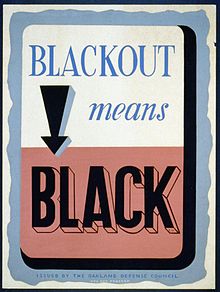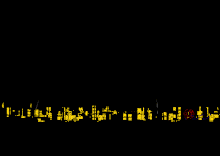
A bomber is a military combat aircraft that utilizes air-to-ground weaponry to drop bombs, launch torpedoes, or deploy air-launched cruise missiles. Bombs were first dropped from an aircraft during the Italo-Turkish War, with the first major deployments coming in the First World War and Second World War by all major airforces, damaging cities, towns, and rural areas. The first bomber planes in history were the Italian Caproni Ca 30 and British Bristol T.B.8, both of 1913. Some bombers were decorated with nose art or victory markings.

Civil defense or civil protection is an effort to protect the citizens of a state from human-made and natural disasters. It uses the principles of emergency management: prevention, mitigation, preparation, response, or emergency evacuation and recovery. Programs of this sort were initially discussed at least as early as the 1920s and were implemented in some countries during the 1930s as the threat of war and aerial bombardment grew. Civil-defense structures became widespread after authorities recognised the threats posed by nuclear weapons.
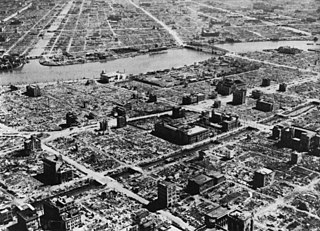
Strategic bombing is a systematically organized and executed attack from the air which can utilize strategic bombers, long- or medium-range missiles, or nuclear-armed fighter-bomber aircraft to attack targets deemed vital to the enemy's war-making capability. It is a military strategy used in total war with the goal of defeating the enemy by destroying its morale, its economic ability to produce and transport materiel to the theatres of military operations, or both. The term terror bombing is used to describe the strategic bombing of civilian targets without military value, in the hope of damaging an enemy's morale.

A searchlight is an apparatus that combines an extremely bright source with a mirrored parabolic reflector to project a powerful beam of light of approximately parallel rays in a particular direction. It is usually constructed so that it can be swiveled about. The most common element used in modern searchlights is Xenon (Xe). However, Rare-earth elements such as lanthanum (La) and cerium (Ce) are used in phosphors to improve light quality in some specialized searchlights.

The Blitz was a German bombing campaign against the United Kingdom, from 7 September 1940 to 11 May 1941, for a little more than 8 months during the Second World War.

Air Raid Precautions (ARP) refers to a number of organisations and guidelines in the United Kingdom dedicated to the protection of civilians from the danger of air raids. Government consideration for air raid precautions increased in the 1920s and 30s, with the Raid Wardens' Service set up in 1937 to report on bombing incidents. Every local council was responsible for organising ARP wardens, messengers, ambulance drivers, rescue parties, and liaison with police and fire brigades.
The Baedeker Blitz or Baedeker raids was a series of bombing raids in April and May 1942 by the German Luftwaffe on English cities during World War II. The name derives from Baedeker, a series of German tourist guide books, including detailed maps, which were used to select targets for bombing.

An airstrike, air strike, or air raid is an offensive operation carried out by aircraft. Air strikes are delivered from aircraft such as blimps, balloons, fighter aircraft, attack aircraft, bombers, attack helicopters, and drones. The official definition includes all sorts of targets, including enemy air targets, but in popular usage the term is usually narrowed to a tactical (small-scale) attack on a ground or naval objective as opposed to a larger, more general attack such as carpet bombing. Weapons used in an airstrike can range from direct-fire aircraft-mounted cannons and machine guns, rockets and air-to-surface missiles, to various types of aerial bombs, glide bombs, cruise missiles, ballistic missiles, and even directed-energy weapons such as laser weapons.
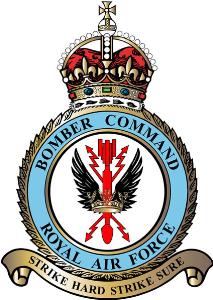
RAF Bomber Command controlled the Royal Air Force's bomber forces from 1936 to 1968. Along with the United States Army Air Forces, it played the central role in the strategic bombing of Germany in World War II. From 1942 onward, the British bombing campaign against Germany became less restrictive and increasingly targeted industrial sites and the civilian manpower base essential for German war production. In total 364,514 operational sorties were flown, 1,030,500 tons of bombs were dropped and 8,325 aircraft lost in action. Bomber Command crews also suffered a high casualty rate: 55,573 were killed out of a total of 125,000 aircrew, a 44.4% death rate. A further 8,403 men were wounded in action, and 9,838 became prisoners of war.

World War II (1939–1945) involved sustained strategic bombing of railways, harbours, cities, workers' and civilian housing, and industrial districts in enemy territory. Strategic bombing as a military strategy is distinct both from close air support of ground forces and from tactical air power. During World War II, many military strategists of air power believed that air forces could win major victories by attacking industrial and political infrastructure, rather than purely military targets. Strategic bombing often involved bombing areas inhabited by civilians, and some campaigns were deliberately designed to target civilian populations in order to terrorize them and disrupt their usual activities. International law at the outset of World War II did not specifically forbid the aerial bombardment of cities – despite the prior occurrence of such bombing during World War I (1914–1918), the Spanish Civil War (1936–1939), and the Second Sino-Japanese War (1937–1945).
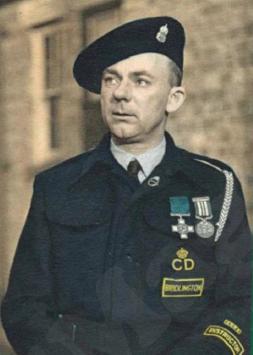
Thomas Hopper Alderson, GC was a British Air Raid Precautions (ARP) warden in Bridlington, and the first person to be directly awarded the George Cross (GC) shortly after its creation in 1940.

The Civil Defence Service was a civilian volunteer organisation in Great Britain during World War II. Established by the Home Office in 1935 as Air Raid Precautions (ARP), its name was officially changed to the Civil Defence Service (CD) in 1941. The Civil Defence Service included the ARP Wardens Service as well as firemen, fire watchers, rescue, first aid post and stretcher parties. Over 1.9 million people served within the CD and nearly 2,400 lost their lives to enemy action.

The German city of Cologne was bombed in 262 separate air raids by the Allies during World War II, all by the Royal Air Force (RAF). A total of 34,711 long tons of bombs were dropped on the city by the RAF. 20,000 civilians died during the war in Cologne due to aerial bombardments.

The Battle of Los Angeles, also known as the Great Los Angeles Air Raid, is the name given by contemporary sources to a rumored attack on the continental United States by Imperial Japan and the subsequent anti-aircraft artillery barrage which took place from late 24 February to early 25 February 1942, over Los Angeles, California. The incident occurred less than three months after the U.S. entered World War II in response to the Imperial Japanese Navy's surprise attack on Pearl Harbor, and one day after the bombardment of Ellwood near Santa Barbara on 23 February. Initially, the target of the aerial barrage was thought to be an attacking force from Japan, but speaking at a press conference shortly afterward, Secretary of the Navy Frank Knox called the purported attack a "false alarm". Newspapers of the time published a number of reports and speculations of a cover-up to conceal an actual invasion by enemy airplanes.
Industrial web theory is the military concept that an enemy's industrial power can be attacked at nodes of vulnerability, and thus the enemy's ability to wage a lengthy war can be severely limited, as well as his morale—his will to resist. The theory was formulated by American airmen at the Air Corps Tactical School (ACTS) in the 1930s.

Air warfare was a major component in all theaters of World War II and, together with anti-aircraft warfare, consumed a large fraction of the industrial output of the major powers. Germany and Japan depended on air forces that were closely integrated with land and naval forces; the Axis powers downplayed the advantage of fleets of strategic bombers and were late in appreciating the need to defend against Allied strategic bombing. By contrast, Britain and the United States took an approach that greatly emphasized strategic bombing and tactical control of the battlefield by air as well as adequate air defenses. Both Britain and the U.S. built substantially larger strategic forces of large, long-range bombers. Simultaneously, they built tactical air forces that could win air superiority over the battlefields, thereby giving vital assistance to ground troops. The U.S. Navy and Royal Navy also built a powerful naval-air component based on aircraft carriers, as did the Imperial Japanese Navy; these played the central role in the war at sea.

Operation Banquet was a British Second World War plan to use every available aircraft against a German invasion in 1940 or 1941. After the Fall of France in June 1940, the British Government made urgent anti-invasion preparations as the Royal Air Force (RAF) engaged the German Luftwaffe in a struggle for air superiority in the Battle of Britain. In May 1940, the Air Ministry had realised that beyond the normal reserves of the RAF, it may be necessary to throw every serviceable aircraft into the battle. On 17 May, an Air Ministry meeting outlined ambitious plans to make use of various aircraft in the event of an invasion.

Mr. Proudfoot Shows a Light is a 1941 British World War II public information/propaganda short film, directed by Herbert Mason and produced by Edward Black for 20th Century Fox. The film had a number of well-known actors of the period, featuring British film and stage actors, Sydney Howard and Wylie Watson.

Strategic bombing during World War I was principally carried out by the United Kingdom and France for the Entente Powers and Germany for the Central Powers. Most of the belligerents of World War I eventually engaged in some form of strategic bombing. The aerial bombing of cities, intended to destroy the enemy's morale, was introduced by the Germans in the opening days of the war. A multi-national air force to strike at Germany was planned but never materialized.

A night bomber is a bomber aircraft intended specifically for carrying out bombing missions at night. The term is now mostly of historical significance. Night bombing began in World War I and was widespread during World War II. A number of modern aircraft types are designed primarily for nighttime bombing, but air forces no longer refer to them as night bombers. More common terms today include interdictor and strike fighter, and such aircraft tend to have all-weather, day-or-night capabilities.
